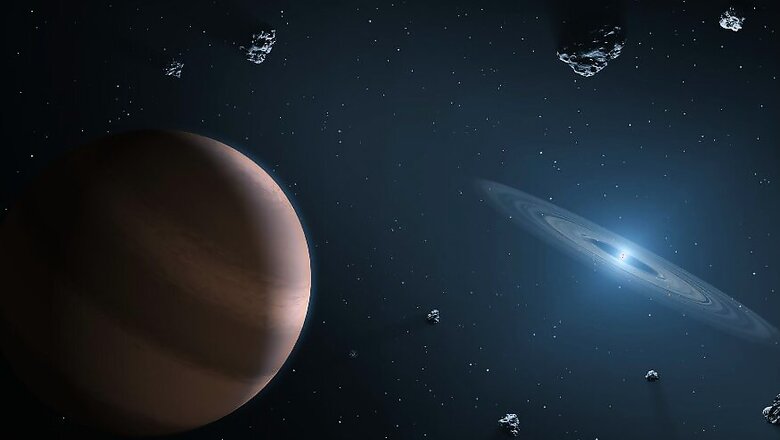
views
The search for another planet with similarities to the one we live on, has led us to what astronomers are calling the new Super Earth. The University of Canterbury astronomers have come across a previously undiscovered planet that is among the handful to have similar size and mass as Earth. The astronomers at the New Zealand university used the solar system as a point of reference, to compare what the Super Earth brings. It has a host star which is about 10% the mass of the Sun. The Super Earth planet has a mass somewhere between that of Earth and Neptune and would orbit at a location between Venus and Earth from the parent star. It has a smaller host star, which means years on the Super Earth are longer—one year is approximately 617 days long.
Dr Herrera Martin, the paper’s lead author, describes the planet-finding discovery as incredibly rare. “To have an idea of the rarity of the detection, the time it took to observe the magnification due to the host star was approximately five days, while the planet was detected only during a small five-hour distortion. After confirming this was indeed caused by another ‘body’ different from the star, and not an instrumental error, we proceeded to obtain the characteristics of the star-planet system,” he says.
Have you also read?
Save Money For a New House on This Super Earth That Scientists Are Sure Can Host Life
Alien Life May Not Need Oxygen: Scientists Say Hydrogen-Rich Planets Can Have Life Too
Lead researchers in the discovery, astronomers Dr Antonio Herrera Martin and Associate Professor Michael Albrow, both of UC’s School of Physical and Chemical Sciences in the College of Science, are part of an international team of astronomers who collaborated on the Super-Earth research.
The hunt for the next earth had earlier let us to an exoplanet called K2-18b. Researchers at the Cambridge Institute of Astronomy had said back in February that K2-18b is right in the middle of a habitable zone in its star system, which means it can possibly hold water. This Super Earth is 124 light-years away from the Earth we reside on and is 2.6 times the radius of Earth. The researchers confirmed the atmosphere to be hydrogen-rich with a significant amount of water vapour. The levels of other chemicals such as methane and ammonia were lower than expected for such an atmosphere and the planet is believed to have an inner core of rock and iron. This research indicates that the layer of hydrogen around the planet is not too thick, which would have made the temperature and the pressure of the water underneath too great to support life.



















Comments
0 comment